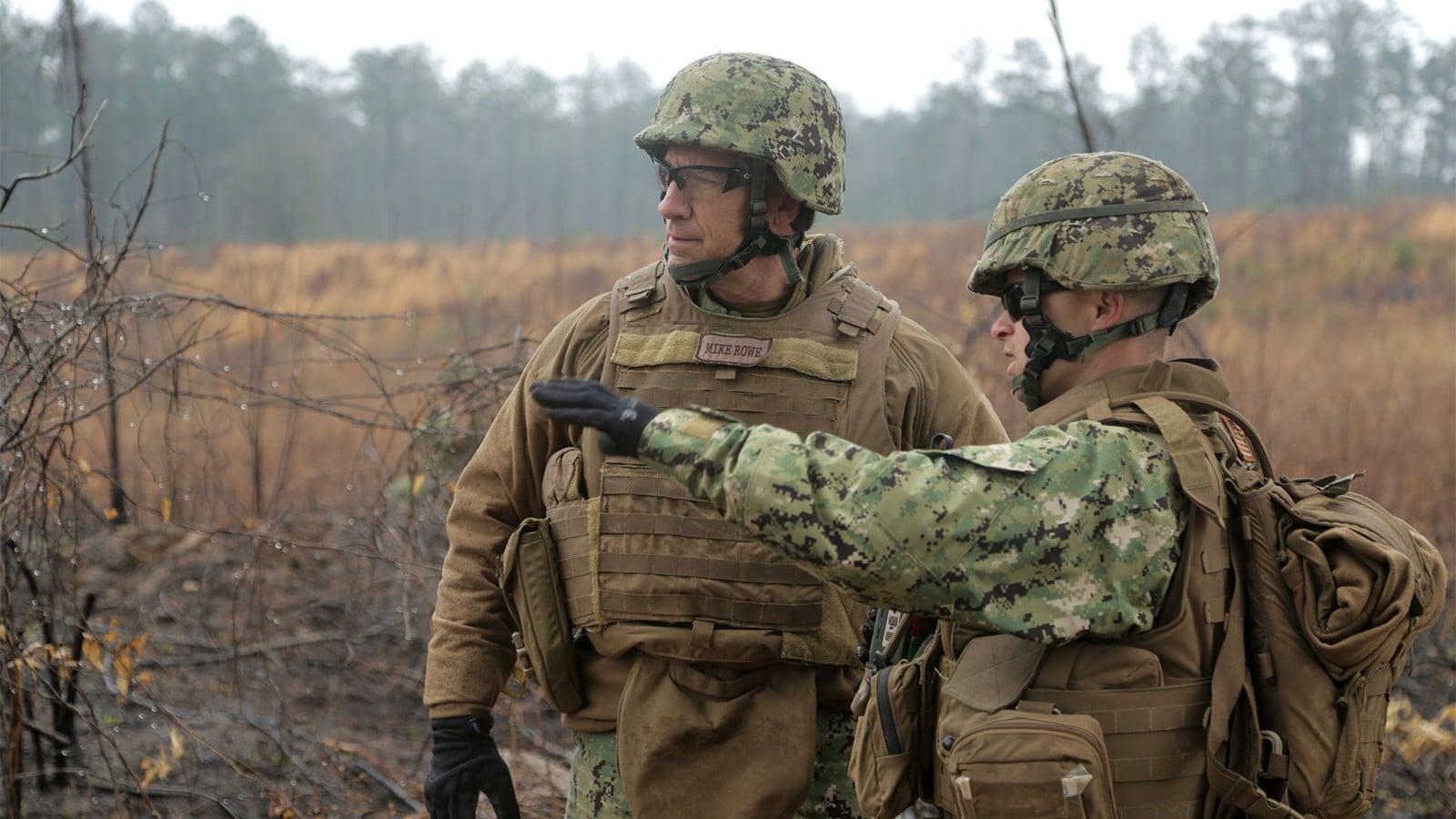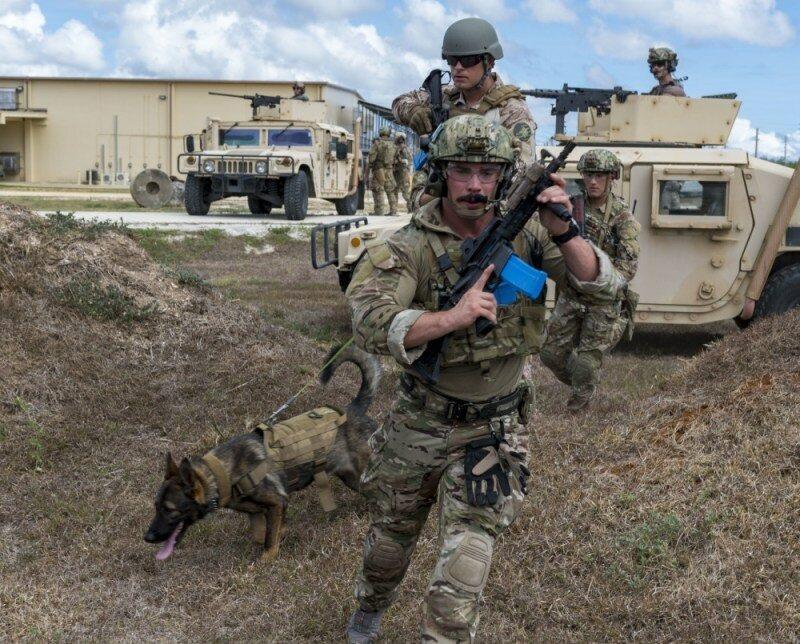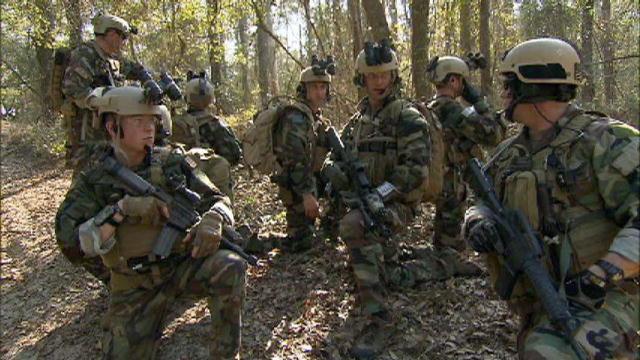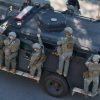The Dirt Navy refers to the missions conducted by the US Navy on the land in the modern war theaters such is as Afghanistan. In a land-locked nation at war such as Afghanistan, thoughts of operations “in theater” often have a predictable image; soldiers and marines, bogged down with armor and gear, trudging through the mountains in search of the enemy. Rarely, if ever, would an outsider ask the question, “Hey, where are all the sailors?”
Sailors on the land
Well, the answer would be simple: Everywhere. From logistical support and intelligence to construction projects and Special Operations, the U.S. Navy is on the job in a big way here in Afghanistan. Working alongside their partners in the Army, Marines, Air Force, and civilian agencies, Naval personnel seem to have adjusted quite well to the rugged earth of Southwest Asia.
Several years ago, while preparing for a different assignment, I watched as a long line of unfamiliar PT suits made their way into a building at a training post in the Midwest U.S. Out of curiosity, I approached and inquired as to why so many Navy personnel were on an Army installation.
The story went that this personnel was taken off of ship-board assignments, was handed cammies and a rifle, and was being trained to provide Force Protection resources for various FOBs (forward operating bases) and Camps in Afghanistan.

I won’t sugar-coat it, they looked scared. What would you expect from a bunch of service members who never thought their Navy career would put them on the ground, in the shit, so to speak, in Afghanistan? I offered encouragement, shook a few hands, and wished them well on their new adventure. I have no idea how that assignment played out, or even if the project went forward as planned, but it was a very important indicator of a changing Navy.
Anyone who has been in the military watched television, or read a newspaper is aware of the U.S. Navy SEALs and their exploits throughout both Afghanistan and Iraq. That is what people think of when they imagine the Navy at war out of their big blue ocean. As impressive and note-worthy as “The Teams” may be, there are two other groups who warrant recognition but rarely get it.
The Dirt Navy
Everyone who has been, “In Theater”, and by that I mean ANY theater since WWII, has encountered a group of people, either directly, or by virtue of their work, whose reputation and exploits are legendary. Hell, John Wayne starred in a movie about them. The Fighting SEABEEs are alive and well and are helping win the war on terror in ways only they can.
What does SEABEE stand for?
SEABEE is a member of one of the construction battalions of the Civil Engineer Corps of the US Navy. I will admit that as a former SEABEE myself, (Naval Mobile Construction Battalion 26 – NMCB26) my opinion is less than impartial. Since we weren’t ship-board sailors, we affectionately referred to ourselves as, “The Dirt Navy.”
There is a reason the SEABEEs have the reputation they hold, and that is because it is all true. “Can Do!” is their motto and they have been fulfilling that in hotspots around the world since the days of island hopping in the Pacific theater during WWII. SEABEEs helped kick in doors in Fallujah, operated convoy security teams throughout Iraq, fought alongside their Marine brothers in Afghanistan, and still found time to do what they do best, which is build things.

A word to any young Commanders out there who have yet to have the pleasure of a SEABEE detachment in their AO. NEVER, I say again, never ask the SEABEEs to build something without providing them the full resources to build it. It will still be built. Of that, there is no question. It will be strong, it will exceed standards, and it will be more than you required. Then, over time, you will realize that other things in your AO are missing, cannibalized, or mysteriously no longer working.
It was an Army Colonel who once told me that STEAL was not a word but an acronym that meant, “SEABEEs Transferring Equipment to an Alternate Location.” Be careful what you ask for gentlemen. The SEABEEs will give it to you, and then some. God Bless ‘em.
There is one constant in Afghanistan: Explosions. Whether they are caused by IEDs, suicide-bombers, car-bombs, mortars, or Chinese rockets fired by the enemy, something is blowing up in Afghanistan right this minute. From the coalition side, we also add to the list with our own air to ground munitions, mortars, and grenades.
Weapons caches have to be destroyed, home-made bombs have to be rendered safe, and suspicious packages have to be investigated. Those who are experts in the area of explosives and their proper disposal are a vital part of the NATO mission here. So, naturally, enter the U.S. Navy. Navy? Of course.
U.S. Navy EOD teams
U.S. Navy EOD teams are a part of Naval Special Operations and, as such, have an appearance similar to what you would expect in better known Spec Ops units. Long hair, full beards, and cool sunglasses are common among the EOD Technicians while “in theater” which adds to the mystique and the jealous stares by “regular” personnel. But, overwhelmingly, they are a group of classy people with nerves of steel, which helps when you are handling something that can blow you into the next zip-code.
Navy EOD works closely with the Special Operations Command (SOCOM) and are classified as Navy Special Operations. Navy EOD personnel are experts in explosives, diving, parachuting, as well as tactical skills of a combat fighter.
EOD personnel from all services have their hands full in Afghanistan. Construction projects often dig up UXO’s (Unexploded Ordnance) that have to be secured and rendered safe. This process is usually as simple as applying an appropriate amount of explosives, a blasting cap, and curing the condition of being Unexploded.
These devices can range from old, rusty, Russian large-caliber ammunition to dud bombs that were dropped sometime over the last 30 years. Each one is secured, moved away from a populated area if possible, and then blasted into pieces.

Landmines are still a major concern in theater as well. There were so many mines emplaced over the decades of conflict that no agency has any real idea of how long it will take to render most of the country safe. When found, they go through the same process of elimination from the battlefield. Often times, it is civilians who accidentally detonate these hidden devices.
It isn’t only our enemies or combatants of wars past who create work for EOD either. As expensive as our own munitions are, occasionally they go dud on us as well. This can be an interesting situation because if we were dropping bombs on an area it means the enemy is there. So, if we know one of our bombs didn’t detonate, it is now our responsibility to locate and destroy that unexploded ordnance to prevent civilian casualties and prevent that explosive material from falling into enemy hands.
The biggest challenge for EOD teams
The biggest challenge for any EOD team, however, has to be the constant hunt for IEDs. Markets and Bazaars are packed with people, carts, cars, trucks, and motorcycles, all potentially carrying a bomb intended for Coalition troops or civilians. Tuk-Tuks or the “Rickshaw” style three-wheeled motorcycle is capable of carrying quite a large explosive into narrow areas where a standard vehicle can’t enter.
Standard motorcycles can get even more places and carry a smaller charge, but it is still enough to create multiple casualties. Even if the motorcycle itself is not a VBIED (Vehicle-borne IED), it can carry a suicide bomber to his target and allow for quick insertion and detonation.
Those ubiquitous motorcycles, typically Pamir brand, cost just below $1,000.00 U.S. Dollars. I know this because we have paid for a few during this tour. If one sits unattended long enough, someone will report it as a suspicious vehicle and potential IED. EOD will investigate the bike and, if they see anything non-standard in the way of wiring or accessories, that bike will be labeled as a possible IED.
A controlled detonation of the bike takes place, expertly planned and executed by the professionals in the EOD teams, and the bike is reduced to small parts and smoke. If there is no secondary blast from an IED being touched off, then it is just bad luck for some newly bike-less pedestrian. I guess you shouldn’t have parked there, buddy.
If the bike’s owner comes looking to be reimbursed for his lost property, we will pay them to have the bike replaced. At $1,000 per, it’s a small price to pay to ensure the safety of our troops and the civilians we protect. But, when in Afghanistan, pay attention to the street signs, if any exist where you travel. No parking means NO PARKING.
So, how is the new “Global Force for Good,” the United States Navy, getting along in this era of land-based warfare? Quite well, thank you. Those of us who have had the pleasure of working with them are proud to have done so.





